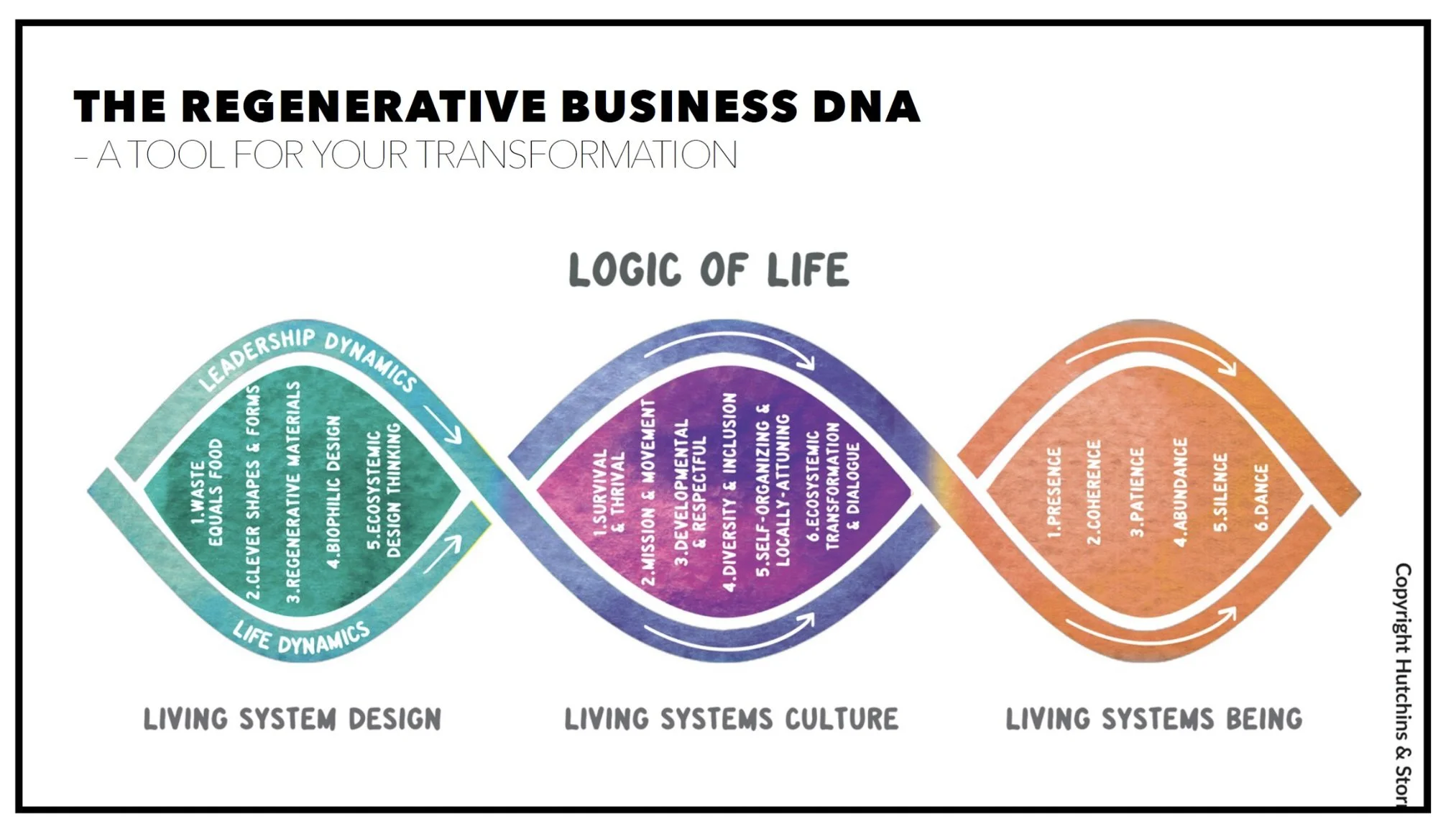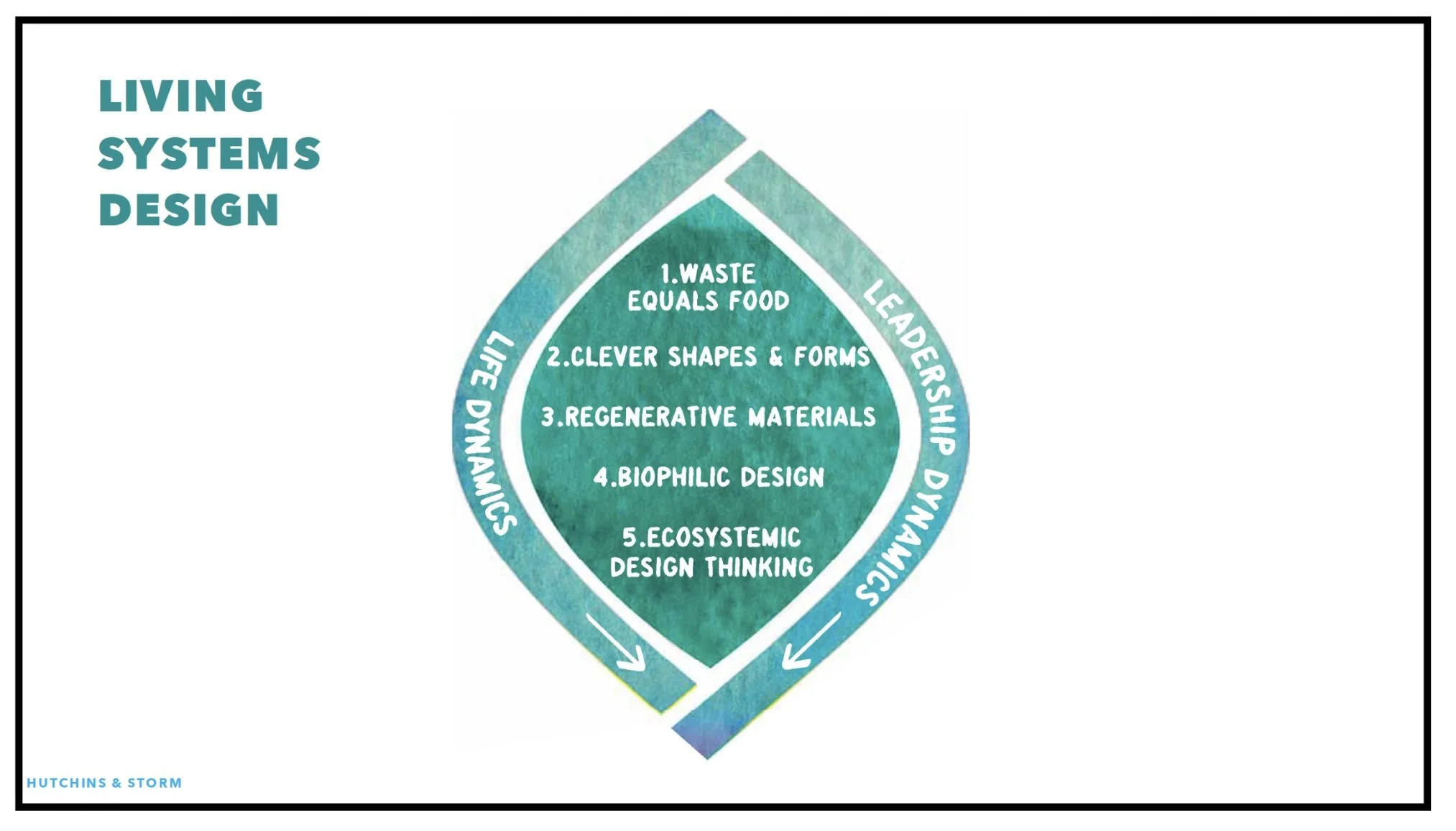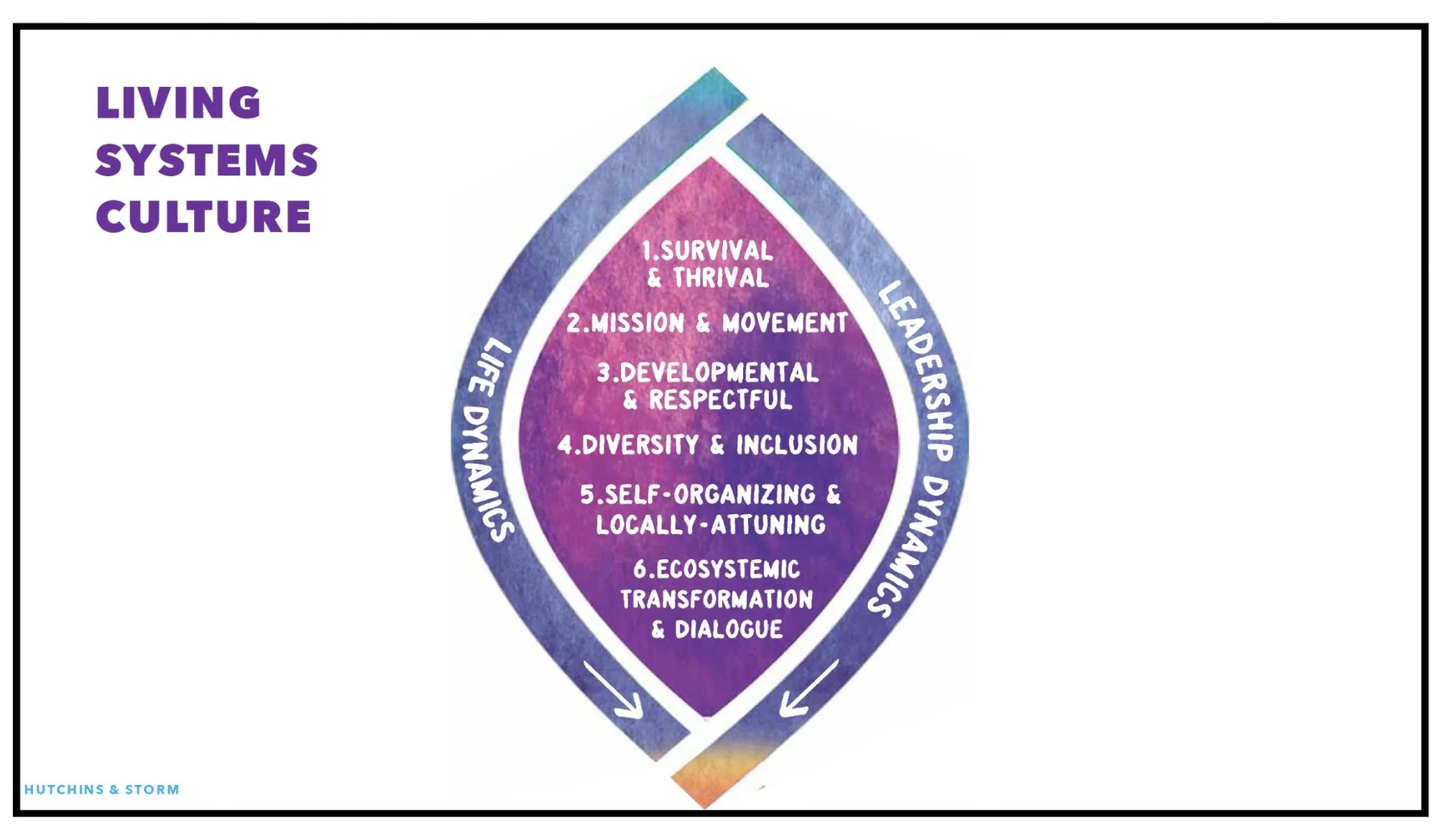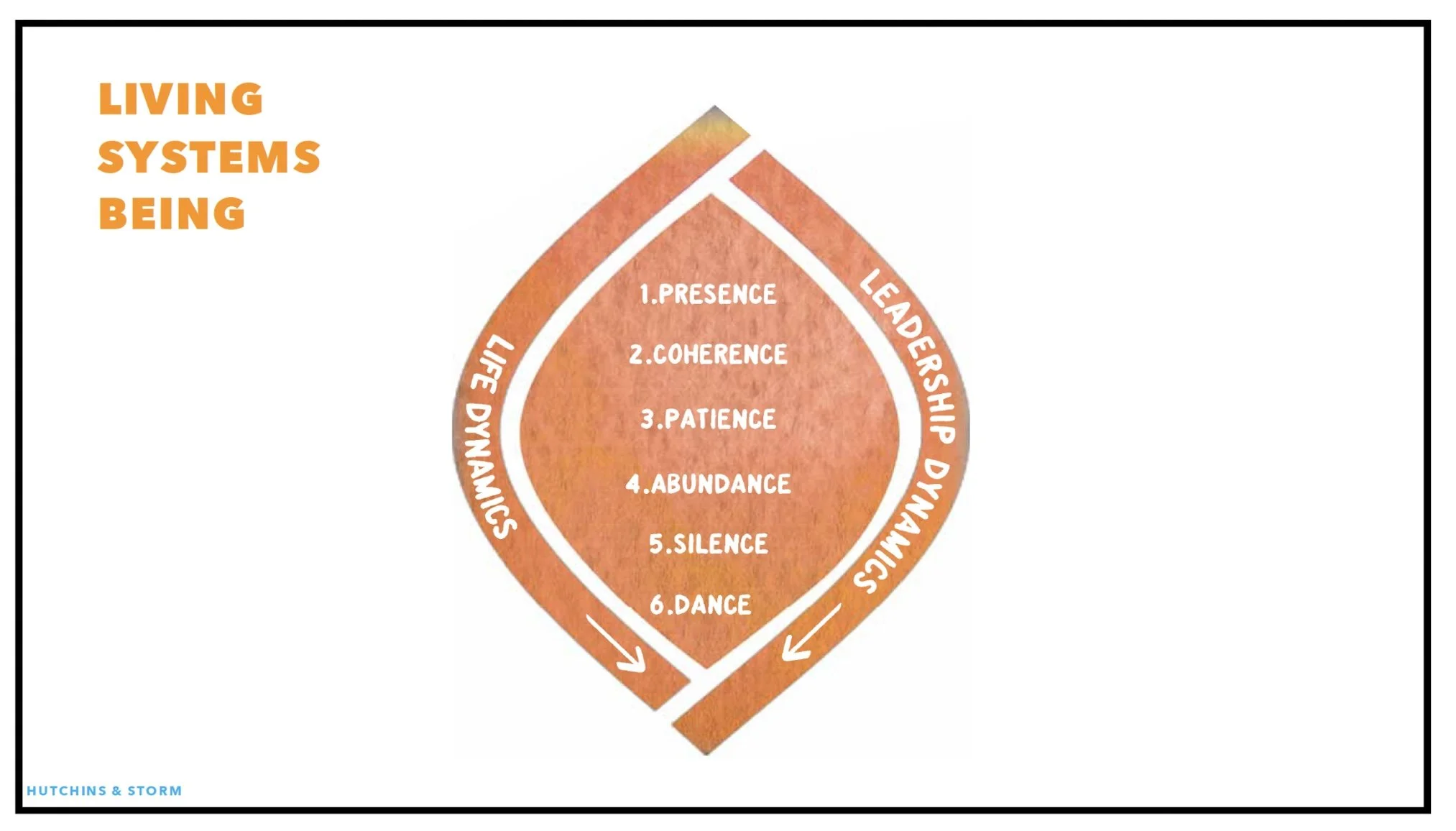The Regenerative Business DNA
Waste equals food that is, circular economy. In nature, all waste is tasty food for someone else. In the same way, everything we produce must be part of a cycle where it sooner or later returns and is reused by us.
Clever shapes & forms. That is, biomimicry — meaning that we borrow from and are inspired by nature’s solutions, which have been developed through millions of years of experience.
Regenerative materials, all the materials we use are regeneratively created.
Biophilic design, how we can develop services and products that strengthen our connection with nature — because our health and well-being are deeply linked to how much time we spend in nature. Nature is our natural habitat, the place where we truly thrive.
Ecosystemic Design Thinking, how can we collaborate and exist in symbiosis with all other parts of business, society, and nature in ways that create well-being for everyone involved? How can we contribute to an evolution toward greater well-being and positive impact for people, society, and the planet? It’s about embracing an ecosystem-based mindset in how we produce and deliver our products and services.
Survival och thrival, how we build economically sustainable organizations — because a regenerative organization is not philanthropy, but rather a different way of viewing value creation. It’s about always creating value not only for the organization itself but for the whole, with respect for the ecosystems both within and beyond our organization. Studies from Harvard show that organizations capable of doing this achieve higher profitability and greater resilience in times of economic crisis. Nordea Equity Research conducted a similar study in 2017 showing the same results.
Mission och Movement, to ensure that our organization contributes to something greater than itself — that your organization is driven by a purpose beyond its financial goals, actively helping to create a better world.
Developmental & Respectful It’s about psychological safety — ensuring that every team member can be their authentic self without masks, and that we create an environment where everyone can grow. It’s also about recognizing that both we and our organization are in constant evolution, which means our roles cannot remain static but must continuously adapt in harmony with each individual’s growth and change. It also means that mistakes and failures are not only accepted but appreciated, as they are an essential part of learning and development.
Diversity & Inclusion, the importance of having people with diverse backgrounds, genders, and perspectives in a healthy organization — strengthening and expanding our collective intelligence.
Self-organizing & Locally-attuning, building an organization based on distributed leadership, self-organization, and autonomous teams — in other words, TEAL organizations.
Ecosystemic transformation & Dialogue, it’s about our organization’s collaboration and dialogue with all other organizations and actors within the ever-evolving ecosystem we are part of — and how, together with them, we can make the ecosystem increasingly robust, resilient, and adaptive.
Presence, our ability to be fully present. Instead of constantly rushing, stressing, and being caught up in “getting things done,” we can pause — regularly, every day — to reflect and be present with ourselves and who we are. By being truly present in each moment, we enable ourselves to listen deeply and take in the whole picture.
Coherence, our ability to sense when we are — and are not — in alignment with our inner values and principles, so that we can continuously ensure that, in interaction with our surroundings, we remain true to ourselves.
Patience, — our ability to accept and live with the fact that not everything can happen immediately, but that we are part of a shared flow of constant change, where we can trust and have patience that what we strive for may take time to emerge.
Abundance, that is, being in a state of perceived abundance. When we are in the opposite state — perceived scarcity — we tend to become egocentric, defensive, and driven by the feeling that we must take as much as possible of the little that exists: money, power, and influence. But when we are in a state of abundance — when we experience that opportunities are always present, that we are part of a greater interconnected whole, and that what we desire can come to us — we become generous, open, and creative. We link arms instead of pushing with sharp elbows. We begin to see win–win–win instead of win–lose in everything.
Silence — the importance of having space to simply be in silence, rather than constantly existing in the stream of noise and information overload that so often surrounds us. To be comfortable in silence, both alone and together with others, allows us to feel, reflect, and grow. It’s closely related to the ability to be present, yet distinct from it. For example, the quality of a meeting can completely transform if you begin and end it with a moment of shared silence. And if you create space for recurring moments of silence with yourself and others, you open up room for deeper connection and insight.
Dance. This doesn’t refer only to physical dance — though that can be part of it — but to embracing the rhythm of life, the different inner seasons we move through and dance with. It’s about allowing ourselves to feel playfulness, to be playful and creative.



